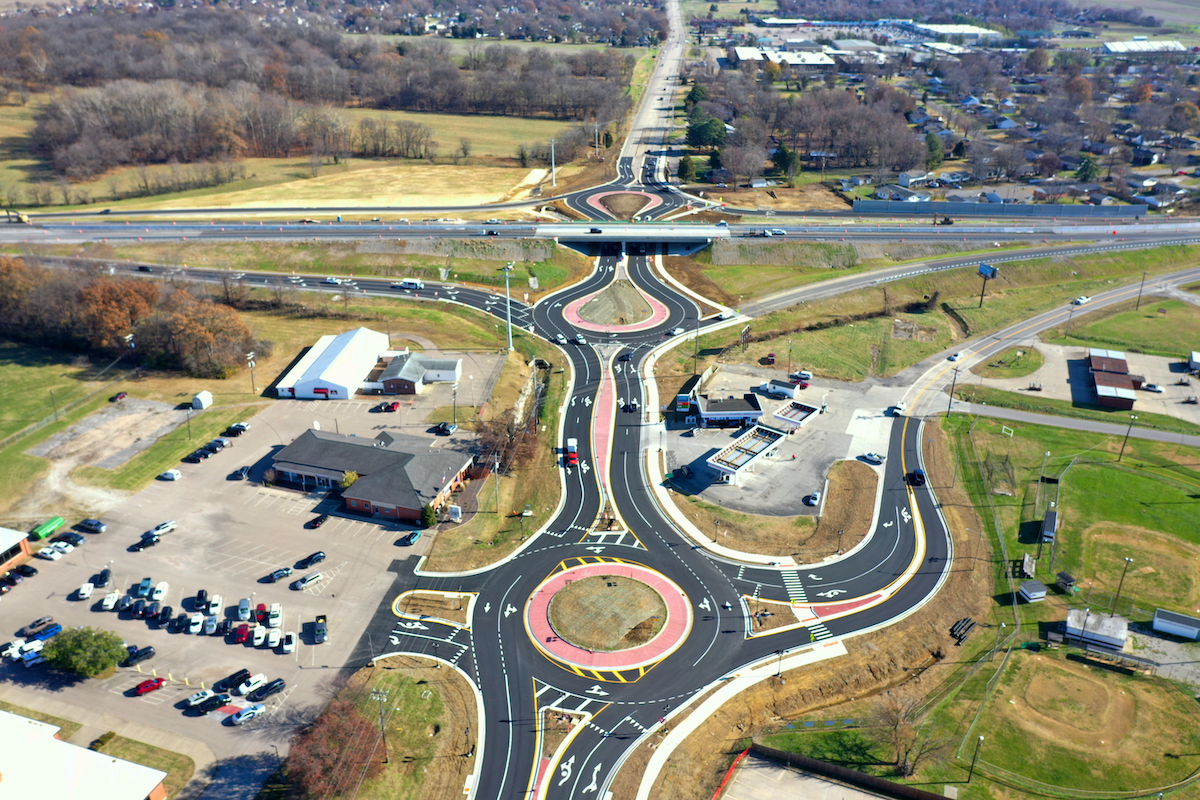The recently completed Merchants Bridge rebuild serves as a showcase of tightly orchestrated engineering and construction planning to replace the double-track bridge, which was built in 1889. Its three main truss spans of 520 feet each needed replacement, and the unreinforced masonry piers did not provide adequate resistance to vessel impact or seismic loading.
“Years of heavy use had caused serious structural degradation that limited crossings,” said Kevin Eisenbeis, Project Structural Engineer at Burns & McDonnell. “The bridge has now gained decades of service life and is projected to boost the local economy by hundreds of millions of dollars thanks to this rebuild project.”
Burns & McDonnell provided preliminary and final truss design, river pier foundation design, seismic analysis, and environmental services for the Merchants Bridge replacement as a subconsultant to Transystems for the owner of the bridge, the Terminal Railroad Association of St. Louis. The engineering solution included stabilizing the existing foundations with micropiles and encasing the footings and original masonry piers with concrete. The new truss span design incorporated a ballasted deck system providing an improvement to the original open-deck, rail-on-tie configuration. In addition, the track centers on the new bridge deck were widened from 12 to 15 feet, providing more operational flexibility and improved safety.
The construction plan for the three main truss spans involved a combination of existing span float-out and new span float-in on barges, plus vertical strand jack lifts combined with lateral slide operations using an overhead gantry system. The three new Warren-type truss spans were individually assembled on barges located along the riverbank. Once a truss span was fully assembled and ready for placement, the contractor Walsh Construction had 10 days to remove an old span and replace it with a new one. The sequence began with a 24-hour river traffic closure. During this nearly round-the-clock operation, empty barges were moved into place in the span between the gantry cranes to receive the existing truss span, which was lifted, slid over, and then lowered to the awaiting barges below. The sequence was then reversed during a second 24-hour river traffic closure to float-in, lift, and slide the new span into position.

| Your local Sennebogen LLC dealer |
|---|
| Brandeis Machinery |
This project required significant coordination to minimize disruptions to rail and river traffic during the three-plus years of construction. Within a few months of the bridge’s completion, an average of 70 trains were crossing the bridge each day, resulting in a 49% increase in rail tonnage to the five Class I railroads that use the bridge.





































































